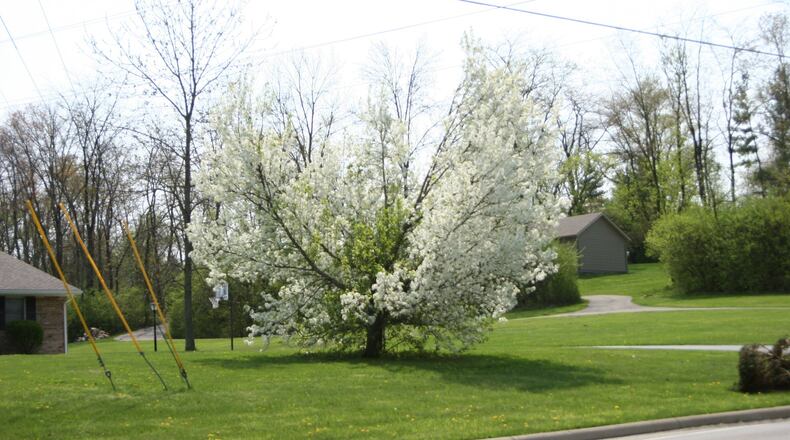This cultivar, “Bradford,” had beautiful white blooms in the early spring, glossy green leaves that turned an intense maroon fall color and remained into the winter, no fruits, and a great pyramidal shape that made them perfect for street trees.
When these trees hit the market, people started using them in landscapes all over the east coast and into the Midwest.
We quickly saw problems with this tree. It has extremely narrow crotch angles, which makes it a perfect candidate for branches to break during storms or ice and snow events. Trees were splitting in half, rendering the tree quite ugly and useless.
MORE GARDENING TIPS: Will this weather damage plants?
Breeders eventually came up with new cultivars that had better (though not perfect) crotch angles that were not as susceptible to branch breakage. These trees had varying fall colors as well. These were introduced into the trade and people started planting these.
The year was 2005, and I vividly remember the day when the two Bradford pears that were planted at my office were loaded with fruits in the fall. I was really shocked.
I also vividly remember longtime Miami Valley nurseryman Peter Scarff (Scarff’s Nursery and Landscape) calling me and asking me if I was seeing fruits on these pears. We were both a bit perplexed.
These trees were “supposed” to be fruitless and normally they are.
The problem that occurred was that when the other cultivars were introduced and planted widely, their pollen started crossing with the Bradford pollen and fruits were produced.
TIPS FOR SUMMER: Keep hanging baskets looking their best
And then, fast forward about five years or so and a colleague of mine, Amy Stone in Lucas County, posed this question: “Has anyone else in the state seen fields of callery pear in bloom in the spring?”
This prompted my colleagues and I to start looking around and there they were, creeping into the disturbed fields and right-of-ways and other areas of the state.
Not only were we still planting them but the seedlings were coming up everywhere.
I applaud the city of Springfield and any others for removing them from their street tree planting program long before they were listed on the invasive species list.
Now you know how this seemingly innocuous and beautiful tree ended up on the invasive species list. What an interesting story, huh?
About the Author
